Learn how to prepare various fruits and vegetables for freezing in your home freezer.
To access the up-to-date "How to Can and Freeze Fruits and Vegetables From Your Garden" blog page, click on this link.
To access the up-to-date "How to Can and Freeze Fruits and Vegetables From Your Garden" blog page, click on this banner.
This page has been visited  times.
times.

Learn the Basics of Freezing Your Fruits and Vegetables
Part 5 of "How to Can Fruits and Vegetables From Your Garden."
Freezing Fruits and Vegetables
Freezing food is a great way of preserving if you do not want to can it. In my opinion is somewhat easier than canning, but foods do not keep as long. The reason you can preserve food by freezing it is because organism that cause spoilage become inactive. As long as the food stays frozen, this bacteria will not grow. Once you thaw the food out, however, bacteria will start to grow again.
Before freezing your fruits and vegetables, you should be aware of some changes that will occur in your harvest. After freezing, foods become mushy because ice crystals damage its cells. Also, if you leave you food in the freezer too long,and if it has been packaged in an inadequate container, it will freezer burn; the color and taste of the food will change for the worse. The food will still be safe to eat at this point,however it will not be as appealing.
Freezing is fairly simple, and you do not need a lot of equipment to get started--just a freezer and containers to freeze in. I usually use plastic bags to freeze in, however you can use just about anything you have on hand. You can freeze in canning jars, cardboard boxes, plastic containers (like butter tubs and cottage cheese containers,) plastic bags, aluminum foil, plastic wrap or freezer paper. Thick plastic bags are best, but if you only have thin ones, double them up. No matter what container you use, you will need to keep in mind that food expands when it is frozen, and you will nned to leave ample room for this. If you don't, your food will expand during the freezing process, leaking out of the containers and all over your freezer; you will have an icey mess to clean up.
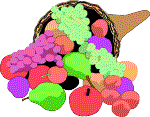
Freezing Fruits
Most fruits will darken after they are cut, so you will need to prevent this by using an antidarkening agent. I usually soak cut fruit in a solution of water and botted lemon juice (about 1 tsp. per quart), but you can use commercial antidarkening agents such as Fruit Fresh. Both work with great results.
Sugar is added to some fruit to help retain color and to enhance taste. You can either add sugar to the fruit and mix it in, or you can mix sugar and water together to form a syrup and pour it over the fruit.
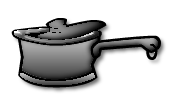
Syrup Recipe
- Light Syrup
- Boil 2 c. sugar and 4 c. water=5 c. syrup
- Medium Syrup
- Boil 3 c. sugar and 4 c. water=5 1/2 c. syrup
- Heavy Syrup
- Boil 4 3/4 c. sugar and 4 c. water=6 1/2 c. syrup
Cool syrup before using.
Freezing Chart for Fruits
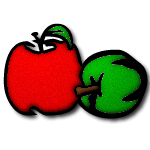 Apples for pies:Peel,core and slice apples. Treat apples with an antidarkening agent. Drain. For each quart of apples, sprinkle with 1/2 cup sugar (optional.) Mix, seal and freeze.
Apples for pies:Peel,core and slice apples. Treat apples with an antidarkening agent. Drain. For each quart of apples, sprinkle with 1/2 cup sugar (optional.) Mix, seal and freeze.
Applesauce:Wash and quarter apples. Cook until tender with enough waterto prevent apples from scorching.Run cooked apples through a colander or food mill and sweeten if desired. Pack into containers.
Apricots for pies:Wash,halve, pit and peel (optional.) If you do not wish to peel, heat apricots in boiling water for 1 minute so skins won't toughen. Treat with an antidarkening agent, drain and mix one quart fruit with 1/2 cup sugar (optional.)
 Blackberries for pies and jams:Remove stems, wash, and drain. Mix 3/4 cup sugar(optional) to 1 quart berries.Fill containers and freeze.
Blackberries for pies and jams:Remove stems, wash, and drain. Mix 3/4 cup sugar(optional) to 1 quart berries.Fill containers and freeze.
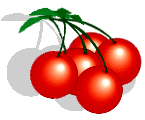 Cherries for pies:Stem, wash, drain and pit. Mix 3/4 c. sugar(optional) to 1 quart cherries. Pack, seal and freeze.
Cherries for pies:Stem, wash, drain and pit. Mix 3/4 c. sugar(optional) to 1 quart cherries. Pack, seal and freeze.
Gooseberries:Remove blossom ends and stems. Wash and pack into containers. You do not have to add sugar. If you wish, you may cover with a heavy syrup and freeze.
 Melons:Cut up melons and pack into containers with a packing syrup from above. Seal and freeze.
Melons:Cut up melons and pack into containers with a packing syrup from above. Seal and freeze.
 Peaches for pies: Wash, pit and peel. If you do not wish to peel the peaches, you can dip them in boiling water for a minute to loosen skins; the skins will then slip right off. Treat with an antidarkening agent, drain (if desired), and pack peaches into containers. Cover with cold water, seal and freeze.
Peaches for pies: Wash, pit and peel. If you do not wish to peel the peaches, you can dip them in boiling water for a minute to loosen skins; the skins will then slip right off. Treat with an antidarkening agent, drain (if desired), and pack peaches into containers. Cover with cold water, seal and freeze.
 Pears:Wash, peel, core and quarter. Heat pears in syrup (using a recipe from above) for 2 minutes. Drain and cool. Pack pears in containers with syrup an antidarkening agent (Fruit Fresh or lemon juice.) Seal and Freeze.
Pears:Wash, peel, core and quarter. Heat pears in syrup (using a recipe from above) for 2 minutes. Drain and cool. Pack pears in containers with syrup an antidarkening agent (Fruit Fresh or lemon juice.) Seal and Freeze.
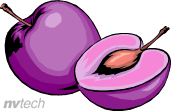 Plums:Wash, pit, and cut in halves. Pack into containers and freeze.
Plums:Wash, pit, and cut in halves. Pack into containers and freeze.
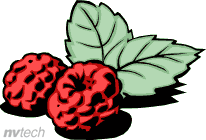 Raspberries:Same as for Blackberries.
Raspberries:Same as for Blackberries.
Rhubarb:Wash and cut into 1-2 inch pieces. Heat in boiling water for 1 minute and cool in cold water. Pack into containers and freeze.
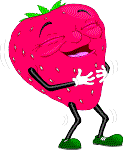 Strawberries:Wash, drain, and remove stems. Add 3/4 c. sugarto 1 quart berries and mix. Put into containers and freeze.
Strawberries:Wash, drain, and remove stems. Add 3/4 c. sugarto 1 quart berries and mix. Put into containers and freeze.
 Tomatoes:
Tomatoes:
Wash, remove stem ends, and blanch for 3-4 minutes. Cool in cold water and remove skins. Quarter, halve or leave whole. Pack into containers leaving 1/2-inch headspace.
Tomatoes, stewed:
Wash, remove stem ends, and blanch for 3-4 minutes. Cool in cold water and remove skins. Quarter and cook until tender (about 20 minutes.)Place the pan of cooked tomatoes in cold water to cool, and pack into containers, leaving 1/2-inch headspace.

Freezing Vegetables
Freezing Vegetables is just like freezing fruits, except you won't be adding sugar to the product. Instead you will be blanching the vegetables before putting them into the freezer. Blanching is when you take a product and submerge it into boiling water for a short period of time. This kills enzymes that age the product.(Your food will takes fresher with blanching.) Afterwards, to stop the cooking process, you will submerge the product into cold water. You will still need to leave a headspace on some vegetables. Then the vegetables will be ready to put into your freezer.
Freezing Chart for Vegetables
Asparagus:
Wash asparagus and cut off any tough parts. Blanch small stalks for 2 minutes and large ones for 4 minutes. Cool, drain, and pack into containers by alternating tip and stem ends. Do not leave a headspace.
Beans,Green or wax:
Pick young, tender beans. Beans with strings are too tough and don't taste as well. Remove stems and break into 1-2 inch pieces. Wash. Blanch in boiling water for 3 minutes and dip into cold water. Drain, pack and freeze. Leave a 1/2-inch headspace.
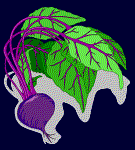 Beets:
Beets:
When triming beets, leave 1-inch of their tops on. This will prevent "bleeding." If you don't, your beets will turn white during cooking. Wash beets and cook them for 25 minutes. Cool in cold water and peel them. The skis should easily slip off now. Cut into cubes or slices, pack and freeze, leaving a 1/2-inch headspace.
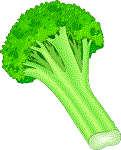 Broccoli:
Broccoli:
Wash and peel stalks.To remove insects, soak for 1/2 hour in a solution of 4 or 5 tsps. salt to 1 gallon of water. Boil for 3 minutes and cool in cold water. Drain and pack into containers leaving no headspace.
Brussels Sprouts:
Trim and remove outer leaves. Wash and boil small heads for 3 minutes and large heads for 5 minutes. Cool in cold water,drain, and pack into containers, leaving no headspace.
Cabbage:
Remove outer leaves and cut into wedges. Wash and heat in boiling water for 2 minutes. Cool in cold water,drain and pack into containers, leaving 1/2-inch headspace. Frozen cabbage is only suitable for use as a cooked vegetables and not for coleslaw.
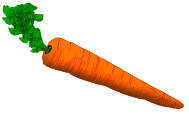 Carrots:
Carrots:
Remove tops, wash, aand scrape or peel. Leave small caroots whole and slice larger ones. Boil whole carrots for 5 minutes and sliced ones for 2 minutes. Cool in cold water and drain. Pack into containers leaving 1/2-inch headspace.
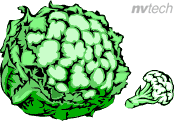 Cauliflower:
Cauliflower:
Break into 1-inch pieces and wash. Remove insects by soaking for 1/2 hour in a solution of 4 or 5 tsps. salt to 1 gallon of water.Drain and rinse. Boil for 3 minutes and cool in cold water. Pack into containers, leaving no headspace.
 Corn:
Corn:
Husk the ears and remove the silk. Heat the ears in boiling water for 5 minutes. Cool in cold water and drain. Cut kernels from the cob and cover corn with water.Pack into containers leaving 1-inch headspace.
Corn-on-the-cob:
Husk,remove silk and blanch (same as above.) Wrap in plastic wrap and pack into containers. Freeze.
Mushrooms:
Wash in cold water. If necessary,soak mushrooms for several hours or overnight in salt water to remove insects. Rinse well. If mushrooms are larger than 1 inch, slice or quarter them. Soak the mushrooms in an antidarkening solution (lemon juice or Fruit Fresh)for 5 minutes, drain. Steam mushrooms for 5 minutes. Cool in cold water and pack into containers, leaving 1/2-inch headspace.
Okra:
Pick tender pods, wash, and cut off stem end. Be careful not to cut open the seed cells. Heat for 4 minutes in boiling water and cool promptly in cold water. Leave whole or slice, and pack into containers leaving 1/2-inch headspace.
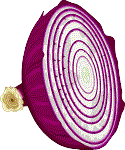 Onions:
Onions:
Wash and peel onions. Chop and place into containers.Leave no headspace.
 Peas:
Peas:
Shell peas and wash to remove blossom ends and pod particles. Heat in boiling water for 2 minutes and cool in cold water. Drain.Pack peas into containers leaving 1/2-inch headspace.
 Peapods:
Peapods:
Wash and blanch pods for 2 minutes.Cool in cold water and pack into containers. Freeze.

Peppers:
Wash, cut out seeds, and chop. Pack into containers, leaving no headspace.
Pumpkin:
Wash pumpkin and cut into quarters. Cook until soft by either boiling, steaming, or baking. Press through a sieve. Cool and pack into containers, leaving 1/2-inch headspace.
Sweet potatoes:
Wash sweet potatoes and cook until almost tender. Cool in cold water and peel. Slice,mash, or leave sweet potatoes whole. To prevent darkening, dip sweet potatoes in lemon juice or Fruit Fresh for about 5 seconds. If sweet potatoes and mashed, just add 2 T. lemon juice to a quart of sweet potatoes. Pack into containers, leaving 1/2-inch headspace.
 Tomatoes:
Tomatoes:
Wash, remove stem ends, and blanch for 3-4 minutes. Cool in cold water and remove skins. Quarter, halve or leave whole. Pack into containers leaving 1/2-inch headspace.
Tomatoes, stewed:
Wash, remove stem ends, and blanch for 3-4 minutes. Cool in cold water and remove skins. Quarter and cook until tender (about 20 minutes.)Place the pan of cooked tomatoes in cold water to cool, and pack into containers, leaving 1/2-inch headspace.






Other Links You May Find Helpful
Introduction on Canning Fruits and VegetablesPage 1 of "How to Can and Freeze Fruits and Vegetables from Your Garden." This page talks about what you should know before you begin to can.
How to Can Vegetables Using a Pressure CannerPage 2 of "How to Can and Freeze Fruits and Vegetables from Your Garden." This talks about canning vegetables using a pressure canner.
How to Can Vegetables Using a Boiling Water CannerPage 3 of "How to Can and Freeze Fruits and Vegetables from Your Garden. This page talks about canning vegetables using a boiling water canner.
How to Can FruitPage 4 of "How to Can Fruits and Vegetables from Your Garden." This page talks about canning fruit.
How to Freeze Fruits and Vegetables from Your Garden.Page 5 of "How to Can and Freeze Fruits and Vegetables from Your Garden." This page talks about freezing basics and "how-to's."
How to Make Jams and Jellies Page 6 of "How to Can and Freeze Fruits and Vegetables from Your Garden." This page talks about the tips and tricks of making homemade jams and jellies.
How to Make Pickles and RelishPage 7 of "How to Can and Freeze Fruits and Vegetables from Your Garden." This page talks about pickling.
How to Dehydrate Fruits and Vegetables from Your Garden.Page 8 of "How to Can and Freeze Fruits and Vegetabes frm Your Garden." This page talks about drying and lists dtying times for fruits and vegetables.
How to Make lye Soap and Other Homemade Concoctions Page 9 of "How to Can and Freeze Fruits and Vegetables from Your Garden." This page talks about making lye soap and other old-fashioned, homemade concoctions and remedies.
Home Processing Troubleshooting GuidePage 10 of "How to Can and Freeze Fruits and Vegetables from Your Garden." This page answers your questions about canning and freezing garden produce.
Other Home Canning Links This site lists other links that you may find helpful.
times.
times.





























